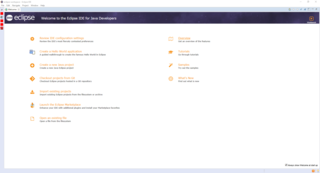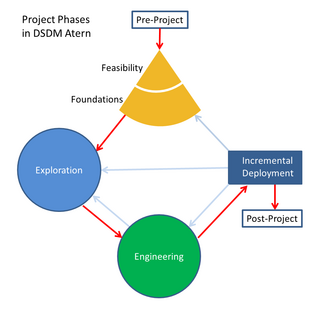This article needs additional citations for verification .(October 2008) (Learn how and when to remove this template message) |
The Eclipse Process Framework (EPF) is an open source project that is managed by the Eclipse Foundation. It lies under the top-level Eclipse Technology Project. It has two goals:

The Eclipse Foundation is an independent, not-for-profit corporation that acts as a steward of the Eclipse open source software development community. It is an organization supported by over 275 members. The Foundation focuses on key services such as: intellectual property (IP) management, ecosystem development, development process, and IT infrastructure. Its members include industry leaders who have embraced open source as a key enabler for business strategy.
Contents
- To provide an extensible framework and exemplary tools for software process engineering - method and process authoring, library management, configuring and publishing a process.
- To provide exemplary and extensible process content for a range of software development and management processes supporting iterative, agile, and incremental development, and applicable to a broad set of development platforms and applications. For instance, EPF provides the OpenUP, an agile software development process optimized for small projects.

Iterative and Incremental development is any combination of both iterative design or iterative method and incremental build model for development.
The Open Unified Process (OpenUP) is a part of the Eclipse Process Framework (EPF), an open source process framework developed within the Eclipse Foundation. Its goals are to make it easy to adopt the core of the Rational Unified Process (RUP) / Unified Process.
Agile software development is an approach to software development under which requirements and solutions evolve through the collaborative effort of self-organizing and cross-functional teams and their customer(s)/end user(s). It advocates adaptive planning, evolutionary development, empirical knowledge, and continual improvement, and it encourages rapid and flexible response to change.
By using EPF Composer, engineers can create your own Software development process by structuring it using a predefined schema. This schema is an evolution of the SPEM [1] 1.1 OMG specification referred to as the Unified Method Architecture (UMA). Major parts of UMA went into the adopted revision of SPEM, SPEM 2.0. EPF is aiming to fully support SPEM 2.0 in the near future. The UMA and SPEM schemata support the organization of large amounts of descriptions for development methods and processes. Such method content and processes do not have to be limited to software engineering, but can also cover other design and engineering disciplines, such as mechanical engineering, business transformation, and sales cycles.
In software engineering, a software development process is the process of dividing software development work into distinct phases to improve design, product management, and project management. It is also known as a software development life cycle. The methodology may include the pre-definition of specific deliverables and artifacts that are created and completed by a project team to develop or maintain an application.

The Object Management Group (OMG) is a computer industry standards consortium. OMG Task Forces develop enterprise integration standards for a range of technologies.
IBM supplies a commercial version, IBM Rational Method Composer.[ citation needed ]






